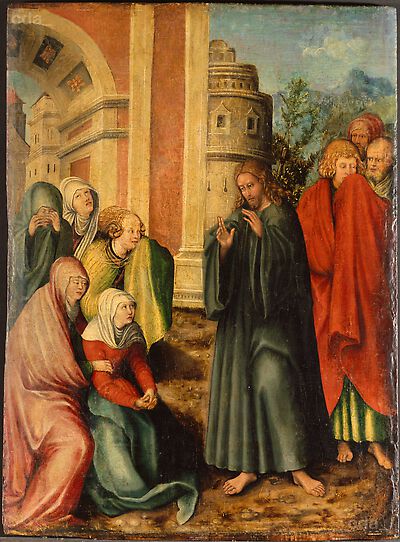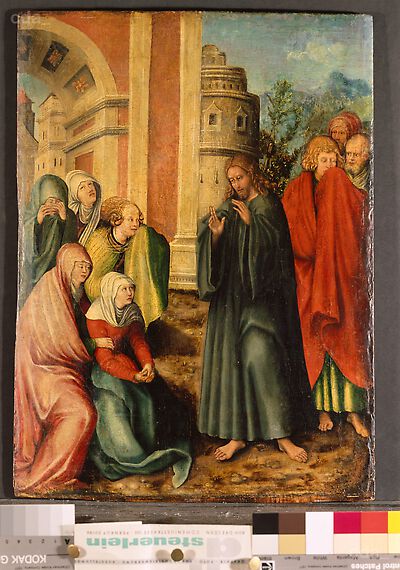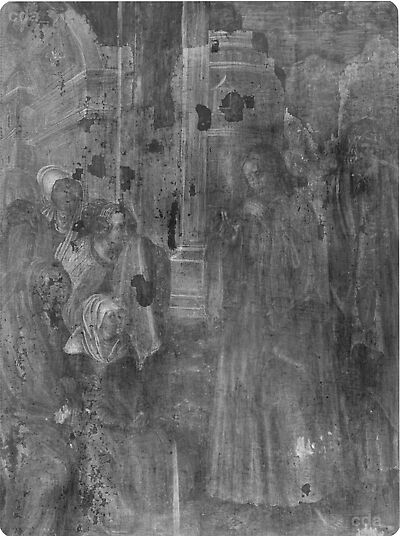- Attributions
-
Follower of Lucas Cranach the Elder
Hans Kemmer
Attributions
| Follower of Lucas Cranach the Elder | ['Cranach Schüler', Exhib. Cat. Lübeck 2021, no. 22] [Emmendörffer 1997, 172-173] [Schaefer 1917, 7] |
| Hans Kemmer | [St. Annen-Museum, revised 2017] |
| Hans Krell | [Junius 1935, 79] |
| Hans Leonard Schäufelein | 'Wahrscheinlich Hans Schäufelein' [Label on the reverse of the panel, 1832] |
- Production dates
- about 1520
about 1530
Production dates
| about 1520 | |
| about 1520 - 1525 | [Exhib. Cat. Lübeck 2021, no. 22] |
| about 1530 | [Schaefer 1917, 7] |
- Dimensions
- Dimensions of support: 46 x 34 cm
Dimensions
Dimensions of support: 46 x 34 cm
- Signature / Dating
Artist's insignia on the pillar of the gate: 'HK' (not linked)
Signature / Dating
Artist's insignia on the pillar of the gate: 'HK' (not linked)
- Inscriptions and Labels
None Reverse of the support: Label: 'Wahrscheinlich von Hans Schäuffelein, Blühte um 1515, ? 1539 oder 1540. Schüler des …
Inscriptions and Labels
Inscriptions, Badges:
None
Stamps, Seals, Labels:
Reverse of the support: Label: 'Wahrscheinlich von Hans Schäuffelein, Blühte um 1515, ? 1539 oder 1540. Schüler des Albrecht Dürer, auf der auction v. Einsiedel von Roibersdorf 1832. Dahl.'
[http://www.museen-sh.de/Objekt/DE-MUS-088015/lido/1979-36] (accessed 22.Nov.2016)
- Owner
- Kulturstiftung Hansestadt Lübeck, die Lübecker Museen
- Repository
- St. Annen-Museum, Lübeck
- Location
- Lübeck
- CDA ID
- DE_SAML_1979-36
- FR (1978) Nr.
- FR-none
- Persistent Link
- https://lucascranach.org/en/DE_SAML_1979-36/


